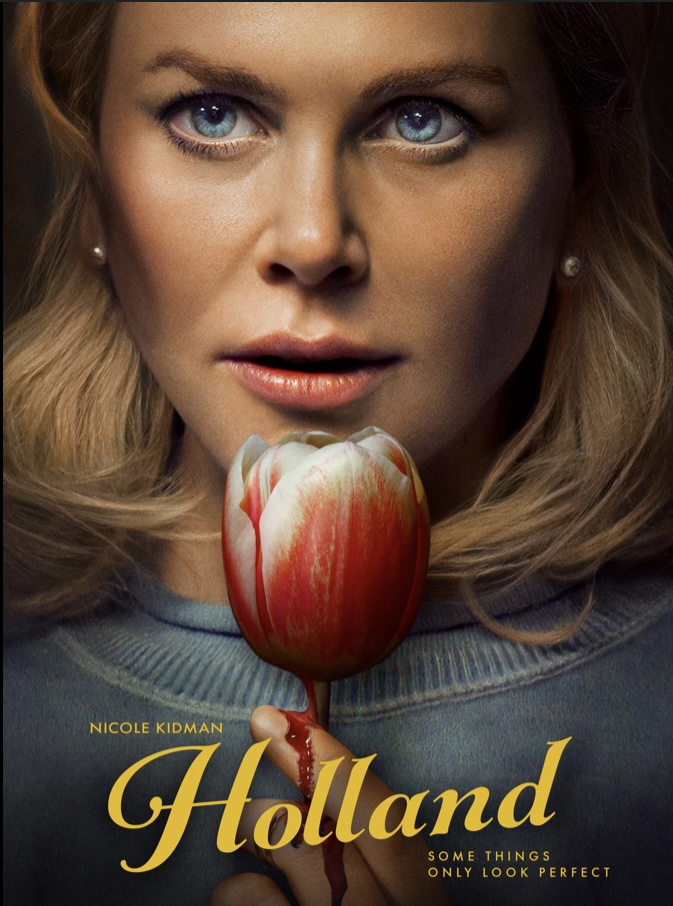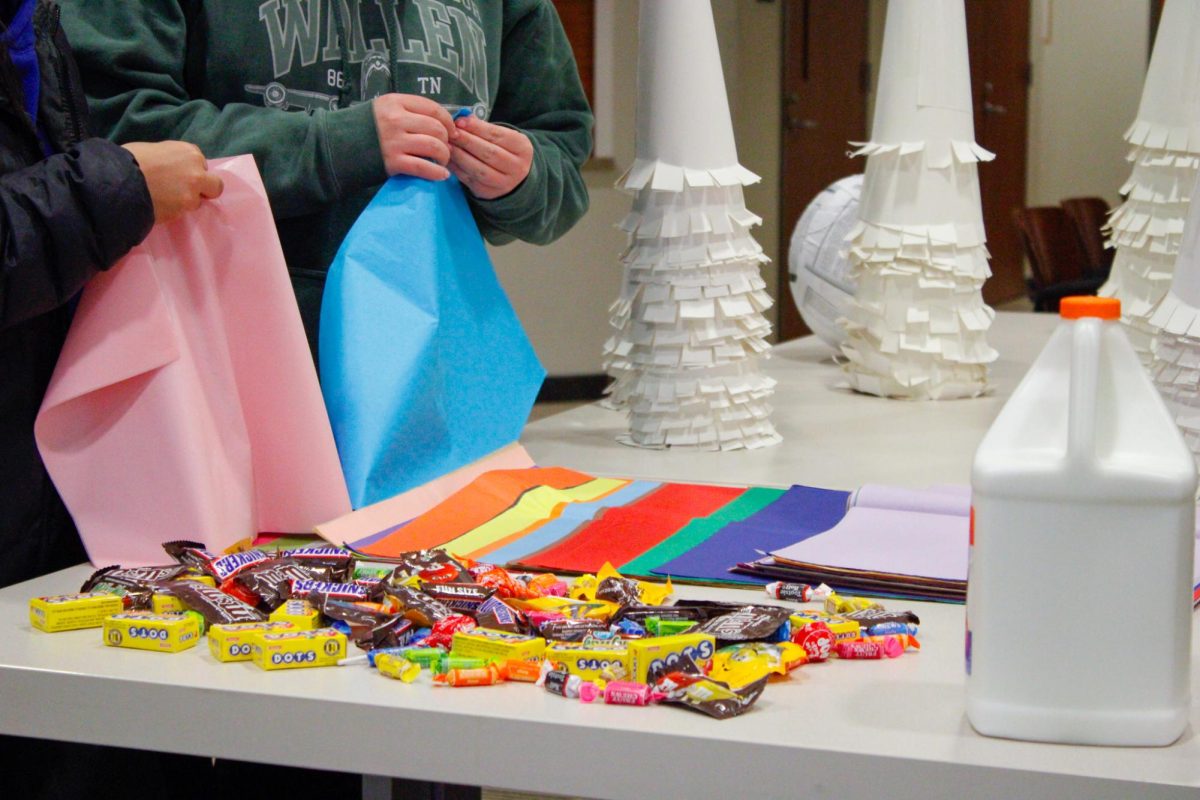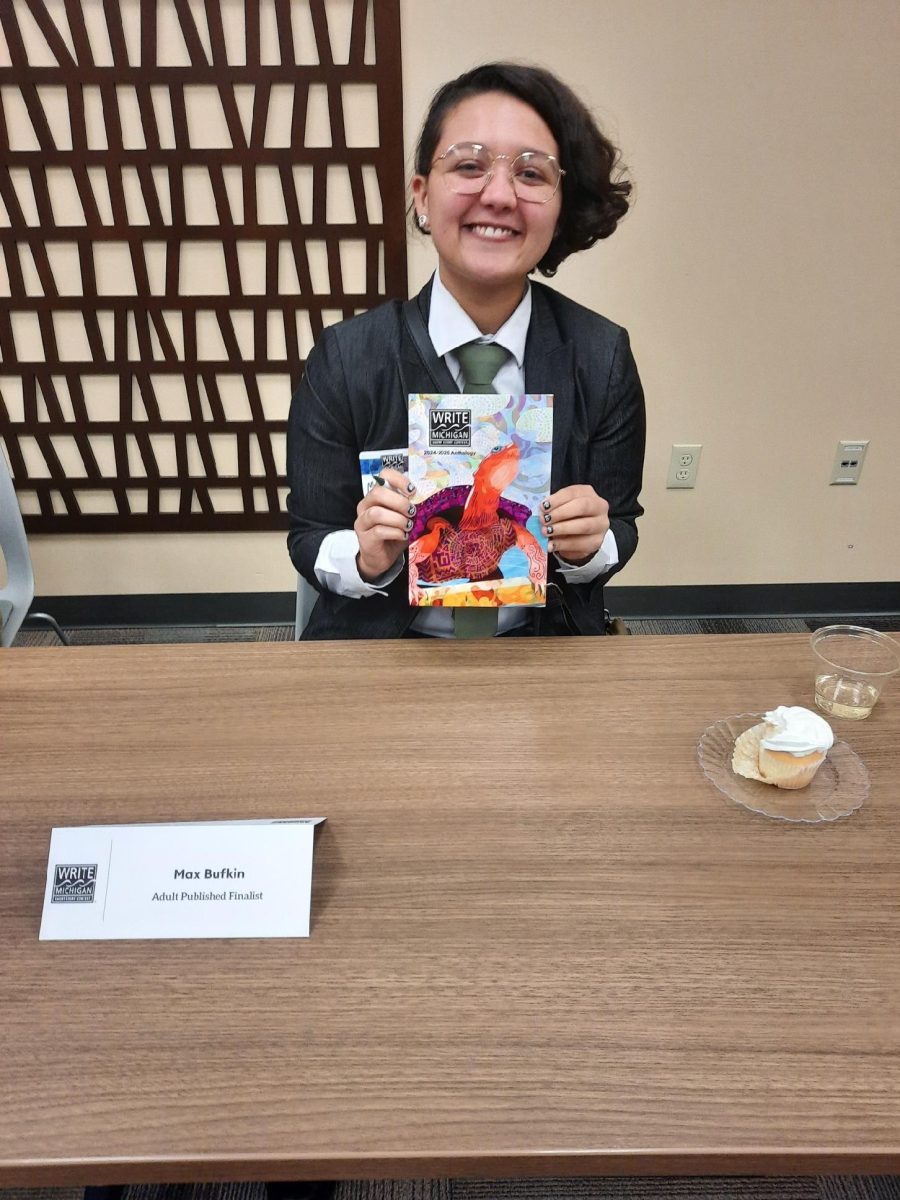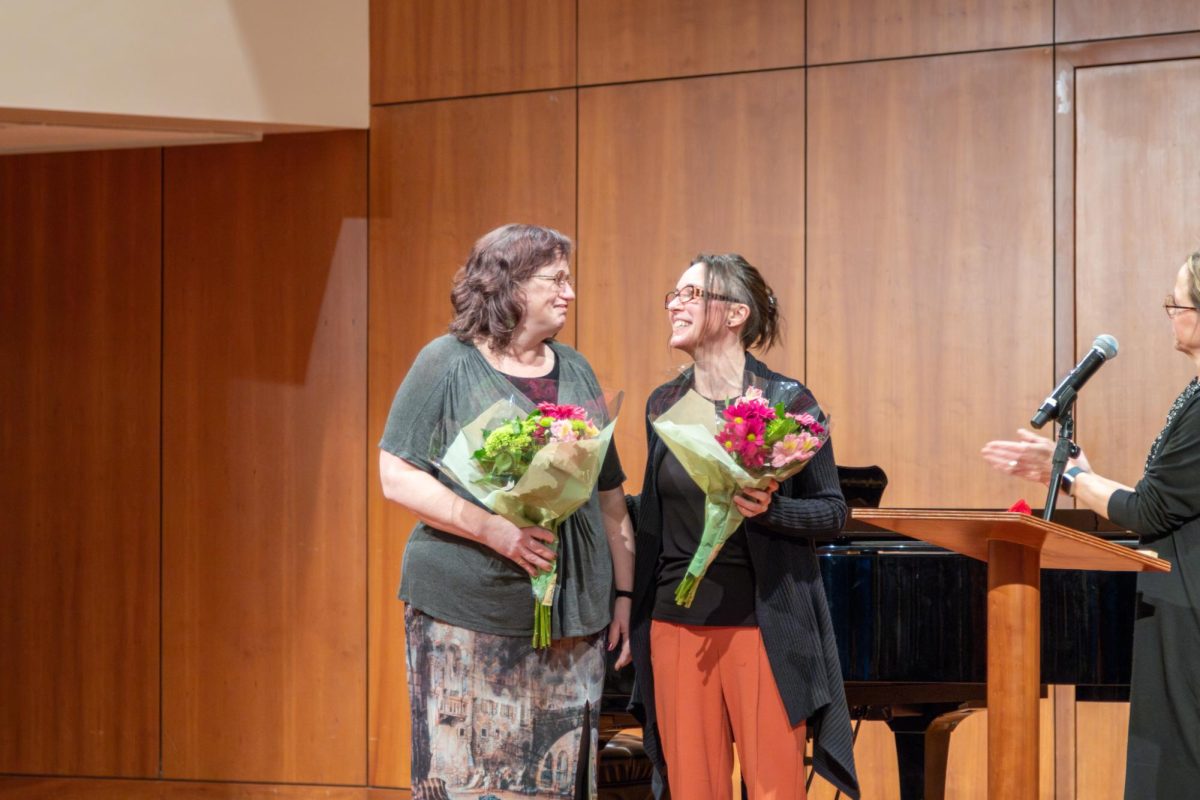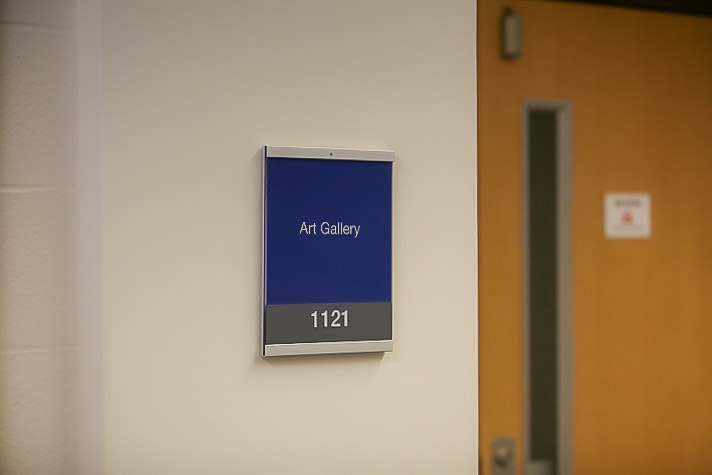On Thursday, Nov. 21 Grand Valley State University’s senior graphic design students hosted a reception for their week-long, BFA exhibition, “Unbound: A Collective Journey of Possibility.” Their exhibition was displayed from Nov. 18-25 at the Haas Center for Performing Arts’ Gallery, and featured student projects that promoted change through wellness, education, awareness and advocacy.
Each student project contained either digital or printed graphic designs that provided unique solutions to societal issues. Some examples of digital content included social media accounts, videos and functioning apps, with which the exhibition’s viewers were encouraged to interact. Printed content included anything from originally designed posters and banners to books and bookmarks. Many students said they used personal experiences to inspire their designs.
Being the seniors’ work was created with the intention of educating and encouraging others to make beneficial changes in society, participating student designers answered questions throughout the reception, and encouraged attendees to interact with their artwork.
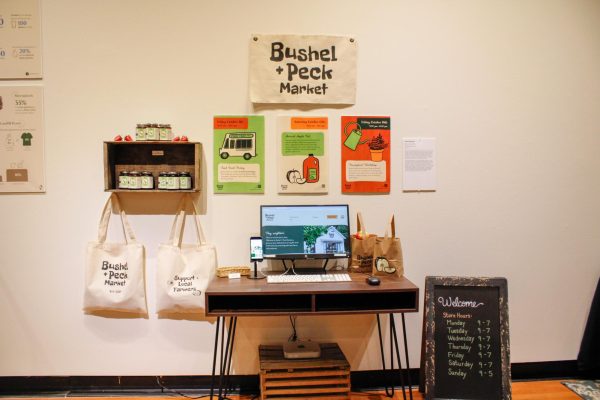
Annika Velduis, one of the graphic design students, took issue with current beauty standards. She created an interactive, digital and print design that focused on breaking the beauty standard by embracing differences.
“(The design’s) aim is to celebrate skin complexions like acne or rosacea by emphasizing your skin with fun and expressive things like eye shadow and colored blushes,” Veldhuis said.
When she started the project, Velduis researched makeup trends and American beauty standards. She kept these in mind throughout the creative process of designing an original solution.
Many of the other projects also combined print and digital mediums to form cohesive displays. Every student’s work had a curated snapshot of their distinctive vision for change.
GVSU design student Katharine Rottach created a display focused on apps such as TikTok, which she emphasized have reduced attention spans by popularizing short-form video content. Rottach said this is an issue she has noticed firsthand among peers. As a result, she decided to create a book intended to pique and maintain the interest of those lacking longer attention spans.
“The type setting in the interior is very different from just a normal book,” Rottach said. “(There) are a lot of different sizes and different fonts.”
In addition to the pages’ dynamic fonts, Rottach added that the book’s content is also important in retaining readers’ interest.
“(The book on display) serves as a legible and readable story that someone could actually enjoy,” Rottach said. “(Readers) won’t know what to expect when they’re turning pages, and that is what will keep them on their toes.”
Another student, Thu Le, found inspiration for her design within her own closet. She noticed a theme when it came to shopping for her clothes, and felt the need to both emphasize and change the pattern.
“When I was cleaning out my closet over the summer, I noticed that I was frequently buying stuff without intentionally thinking about it,” Le said.
Le added that her design was not focused on telling people to change their entire wardrobe overnight. Instead, she aimed to educate people on sustainable fashion so they can incorporate that knowledge into their future wardrobe considerations.





